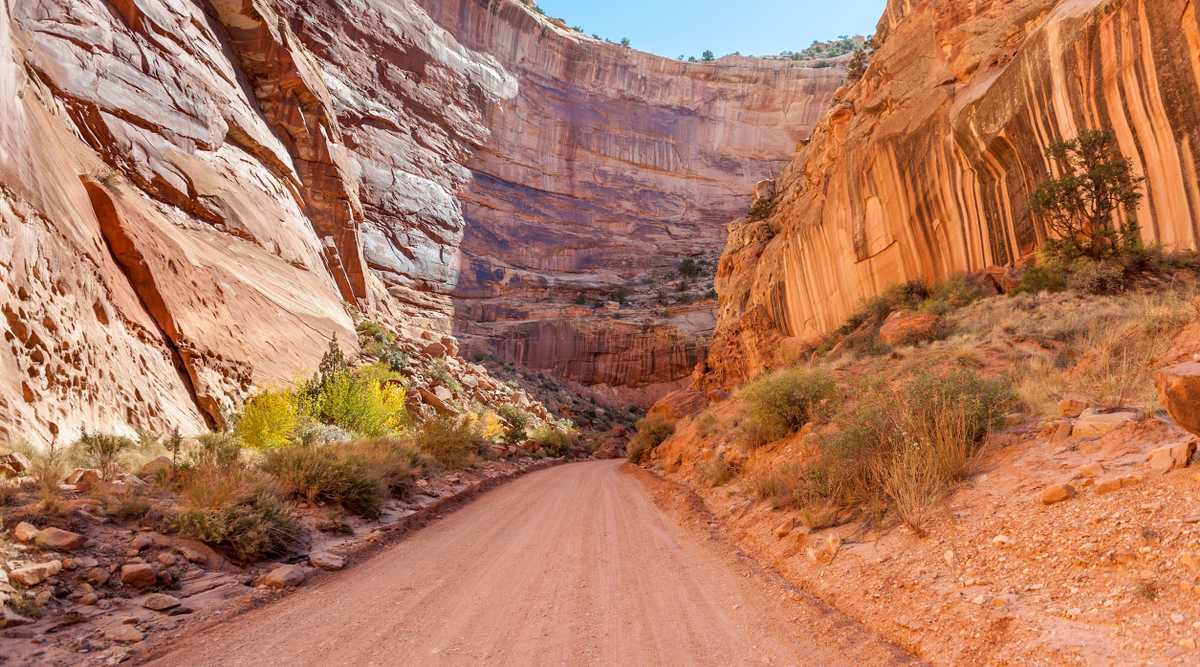Capitol Reef National Park is world-famous for its amazing geological features, including the Waterpocket Fold, a 100-mile long wrinkle in the earth's crust. This fold formed over millions of years as the earth's crust slowly eroded and was pushed up by the forces of plate tectonics. Today, visitors can see the Waterpocket Fold from the top of Capitol Reef, or hike down into its canyons to get a closer look.
In addition to its geological wonders, Capitol Reef National Park is also known for its amazing hiking and camping opportunities. There are hundreds of miles of trails to explore, ranging from easy day hikes to multi-day backpacking trips. Campgrounds are available both inside and outside of the park, so visitors can choose their level of wilderness experience.
Whether you're looking for an adventure or just a place to relax and take in the beauty of nature, Capitol Reef National Park is the perfect destination.
1. Hiking
Hiking in Capitol Reef National Park can be a beautiful experience, but it is also strenuous. You will likely experience some elevation gain, and depending on the trail, may also experience significant exposure to the sun. Bring plenty of water, sunscreen, and insect repellent, and wear a hat, sunglasses, and sunscreen if you are hiking during the day. If you are camping in the park, be sure to bring your own food, water, and first-aid supplies.
2. Biking
There is plenty of bike trails throughout Capitol Reef National Park that allow riders to explore the park at their leisure. Visitors should be prepared for steep, rocky paths, as well as hot and humid conditions.
3. Camping
Camping in Capitol Reef National Park is a great way to see the park and enjoy the outdoors. There are several campgrounds within the park, each with its own amenities and restrictions. Some campgrounds have showers and toilets available, while others are primitive and do not have facilities. Campers should bring their own food, water, and camping equipment, and be prepared for temperatures that can range from mild to hot and dry.
4. Horseback riding
Generally, horseback riding in Capitol Reef National Park will involve a ranger leading the horseback ride and pointing out scenic areas along the way. Horseback riders are also encouraged to stay on the trails and not wander off into the wilderness. There are no stables in Capitol Reef National Park, so horseback riders are expected to bring their own food and water.
5. Rock climbing
Rock climbing in Capitol Reef National Park can be extremely rewarding, but there are a few things to expect. You will need to be prepared for steep cliffs, uneven surfaces, and tight spaces. Be sure to have adequate climbing gear, including shoes, harness, ropes, and a helmet. Always use common sense when climbing, and be aware of the risks involved.
6. Canoeing
There are many canoes and kayaks available for rent from outfitters in Capitol Reef National Park. Expect to paddle through beautiful, crystal-clear water with stunning scenery. You may see wildlife such as bighorn sheep, elk, and deer. You may also see rock formations such as the Natural Bridges and the Ledge.
7. Kayaking
Kayaking in Capitol Reef National Park is a great way to get a feel for the park's stunning landscape and wildlife. You can expect to see plenty of wildlife while kayaking, including bighorn sheep, deer, and other birds. You may also see petroglyphs, which are ancient rock carvings. Kayaking is a great way to relax and enjoy the park's natural beauty.
8. Fishing
Fishing in Capitol Reef National Park can be rewarding, but there are some things to be aware of. Many of the rivers and streams in the park have tight, rocky banks that can be difficult to negotiate. When fishing in these areas, use caution and be aware of your surroundings. Fishing in Capitol Reef National Park can also be very rewarding, but be prepared for challenging conditions. The park is home to a variety of wild trout, which can be quite large. Anglers should also be prepared for high temperatures and high humidity, which can make for a tough day on the river.
9. Swimming
When swimming in Capitol Reef National Park, visitors should expect to see an abundance of colorful aquatic life, including schools of fish and colorful coral. In addition, visitors may notice an increase in the number of snakes and other small wildlife while swimming in the park.
10. Bird watching
One can expect to see many different types of birds while bird watching in Capitol Reef National Park. Some common birds to see include bald eagles, American kestrels, sandhill cranes, golden eagles, and ospreys.
